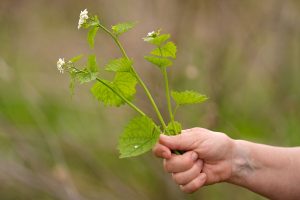BOSTON (AP) — Amid renewed interest in foraging for edible wild plants, mushrooms and other foodstuffs, experts caution aspiring foragers to prioritize safety, plan carefully and learn proper identification. Here are some things to consider before venturing out to gather food from forests, urban landscapes and elsewhere.
Confirm plant identification
It’s critical to avoid accidental poisoning. If you have even the slightest doubt about a plant’s safety, don’t touch or taste it. Relying solely on photos from a quick online search also can be dangerous, as those are often misidentified, said Iris Phoebe Weaver, a longtime herbalist and foraging instructor in Massachusetts.
Know toxic look-alikes
Many wild edible plants have poisonous doppelgangers. A variety of printed field guides advise foragers to familiarize themselves with the dangerous species in their area, including potential similarities to edible plants they intend to harvest.
Avoid polluted areas
Plants can act like sponges and absorb pollutants from the environment, so it’s advisable to gather plants in clean areas, away from busy roads, toxic sprays, mining sites, railroads, industrial sites or places where chemicals have been used. When harvesting aquatic plants, field guides suggest ensuring the water is clean and rinsing thoroughly before eating.
Respect land ownership and local rules
In the U.S., it is illegal to forage on private property without the landowner’s permission. Many state and federal parks prohibit or limit foraging, so field guides recommend foragers check local regulations and permit requirements and to also be mindful of signage about not disturbing vegetation and avoiding areas where pesticides have been applied.
Consider sustainability
People focused on ethical foraging often aim to avoid overharvesting and leave enough for the plant to survive and replenish itself. Some follow a rule of taking no more than one-third of a species from a particular patch. But abundant invasive species, including dandelions or garlic mustard, can be harvested more freely, said Evan Mallett, a chef and forager in New Hampshire.
Understand optimal harvest
The edibility and palatability of a plant depend on gathering the correct part at the appropriate stage of growth, so foragers typically want to know when plants are at their prime for eating. Leaves can be best when young and tender, often before flowering, while many roots and tubers are best harvested after the tops have died back or gone dormant in autumn or winter, according to Althea Press’ “Edible Wild Plants for Beginners: The Essential Edible Plants and Recipes to Get Started.”
Start small and cross-reference
When trying a foraged edible for the first time, taste only a small amount and wait 24 hours to ensure you don’t have an allergic or adverse reaction. And because information can vary or be inaccurate, some field guides recommend cross-checking new plants with at least two or three publications or experts to verify identification.
Seek in-person instruction
Aspiring foragers can hone their skills with help from an experienced local forager, herbalist or naturalist, or by joining a class or a local Native Plant Society.
Learn preparation techniques
Some wild plants are indigestible, bitter, tough or even toxic if eaten raw and require specific preparation — like boiling, cooking or drying — to become palatable or safe. For instance, certain lichens contain powerful acids that must be leached away before consumption, and acorns must often be leached to remove bitter tannins. Field guides warn foragers not to assume edibility based on flavor alone, as some poisonous plants taste fine.
By RODRIQUE NGOWI
Associated Press





